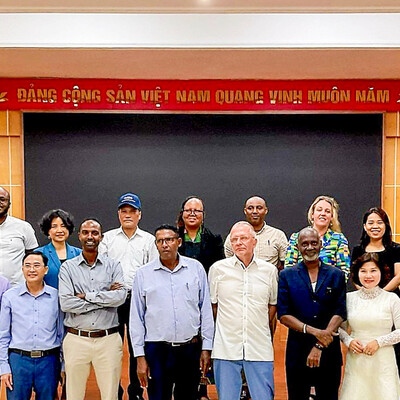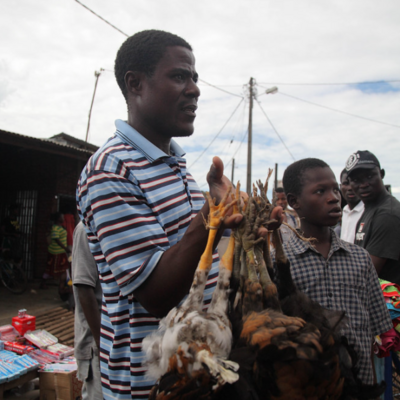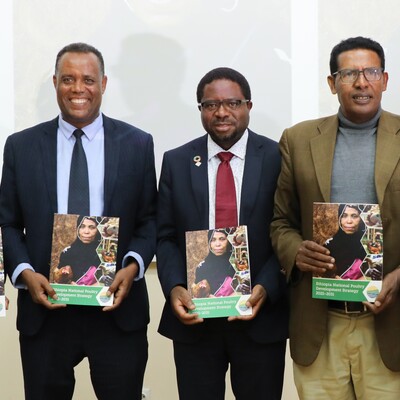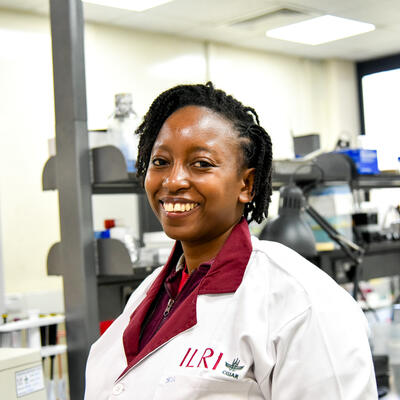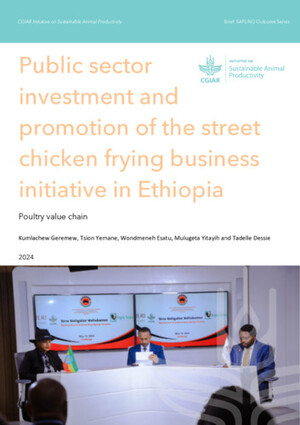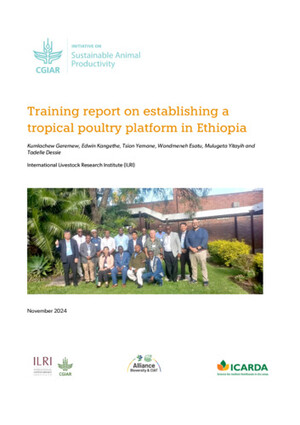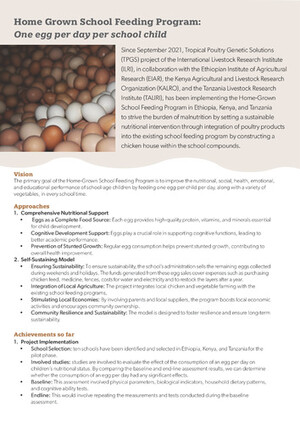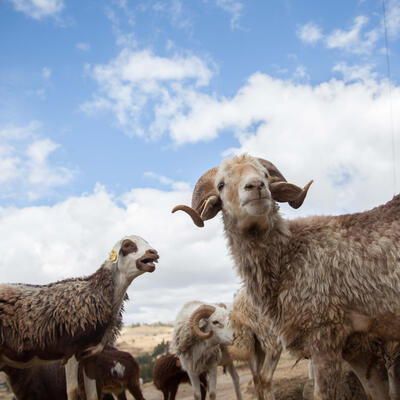
Strengthening the role of chicken genetics for sustainable poultry development in the tropics
The Tropical Chicken Genetics Solutions (TPGS) initiative and their partners held a two-day workshop on 7 – 8 July 2022, at Bahir Dar University, Ethiopia, to document lessons learned from the program and explore opportunities to enhance the effectiveness of complementary chicken-based interventions. The workshop also proposed business models for improving the performance of chicken value chains.
TPGS is a genetics innovation strategy for identifying and testing high-producing farmer-preferred poultry genotypes and using them at scale to address income, nutrition and empowerment challenges in Africa, Asia and beyond.
In her opening remarks, Siboniso Moyo, deputy director general for research and development - livestock genetics and feeds and forages at the International Livestock Research Institute (ILRI), said the workshop was happening at an opportune time, just when the UN had released an alarming report[1] on the rise of food insecurity indicating that the number of people facing hunger globally had risen to as many as 828 million in 2021. She said the demand for food would continue to rise in African and Asian countries due to population growth, resulting in pressure on the livestock sector, including the chicken value chain.
Moyo noted that the workshop presented a prospect for South-South collaboration, which ‘means an opportunity to share experiences around tools, methods, approaches, processes and indigenous knowledge gained from farmers in the global South. She urged the participants to find ways to ‘translate and adapt Africa Chicken Genetic Gains (ACGG) models to Asia. ‘Let’s use this opportunity to have a well-documented case study of South-South collaboration through TPGS. We should tell our story,’ she said.

Siboniso Moyo, ILRI's deputy director general for research and development delivers the opening remarks
Tadelle Dessie, the project’s principal scientist, explained the drive behind TPGS. He emphasized that science was the backbone of the project that will be working to develop new strains and innovation around feeds. ‘TPGS is working towards broader and larger impact with an emphasis on local chicken breed development and conservation. It is taking an integrated approach involving new partners and donors, with more intervention countries and organizational innovation,’ said Dessie.
Lessons from ILRI’s chicken genetics research
Presentations from the TPGS team included one from program nutritionist, Kumlachew Geremew, on nutritional interventions such as training members of the community on the benefits of chicken for children and women, cooking sessions and women empowerment initiatives. He reported, amongst other results, that the dietary diversity for women and children had improved and the uptake of chicken meat and egg consumption had increased since the program began.
Mulugeta Yitayih Birhanu, presented an overview of smallholder poultry production in Africa from a socio-economic perspective. He highlighted the fact that poultry is the major livestock species kept by 57% of smallholder farmers in sub-Saharan Africa thus improving this sector will significantly improve their livelihoods. Mulugeta, a socio-economist at ILRI, reported that the majority of farmers (83%) preferred improved poultry breeds such as X that grow fast, produce bigger and more eggs, are better adapted to the environment make efficient use of available feed resources.
In his presentation, Olivier Hanote, TPGS co-coordinator and principal scientist, pointed out the gradual and ongoing local adaptation of indigenous chicken in sub-Saharan Africa, that is driven by the realization of the nutritional and economic value of chicken. He also explained how computer algorithms are being used to by researchers to better understand the link between environmental conditions and the uniqueness, productivity and adaptation of livestock populations, including chicken. ‘These digital systems,’ he said, ‘can be used for predicting the ecological suitability of particular chicken breeds to specific environments.’

Olivier Hanote, TPGS co-coordinator and principal scientist presents on the ongoing local adaptation of indigenous chicken in sub-Saharan Africa
ILRI scientist Christian Tiambo said the vast biodiversity of African poultry could contain solutions to improvement of the global poultry industry’s resilience and promotion of low-input farming systems for sustainable livelihoods. In line with this, he added, the ILRI biorepository and reproductive technology platform is being used to preserve poultry breeds of interest.
During the afternoon’s question and answer session, Dessie was asked what he would do differently if he was to start over with ACGG and he responded, ‘I would start with less farmers because this led to a compromise of the data quality and would instead focus on generating quality data.’
Country-level experiences with ACGG/AsCGG
The workshop’s second day began with a presentation by Ochieng Ouko from the Kenya Agricultural and Livestock Research Organization (KALRO) on the poultry seed system in Kenya. Ouko said chicken feed alternatives were in high demand in his country, but black soldier fly supply was inadequate and policy barriers remained a point of contention for genetically modified feeds that could directly improve production.
‘In Kenya, we are working towards filling the policy gap with poultry research as well as coordinating policy implementation to harmonize the movement of poultry and poultry products across the various counties,’ he stated.
In support of Ouko’s presentation, Ezekiel Goromela from the Tanzania Livestock Research Institute (TALIRI) said policy harmonization in support of research was crucial and suggested creating a forum that would help policymakers understand the value of poultry research and advocate for greater funding of the poultry sector.
Richard Osei-Amponsah, the national coordinator from Ghana, reported that farmers in that country had been impressed by the growth, feed efficiency and adaptability of the Kuroiler and Hubbard hybrid breeds of chicken. He said they were hoping for similar results with egg production.
Hybrid varieties are being promoted in Vietnam as well, to harness the benefits from both exotic and local breeds of chicken. National coordinator Cuc Kim said many Vietnamese local breeds were facing extinction due to low-income generation, while exotic breeds were preferred due to high market demand.
In Cambodia, TPGS project activities are being implemented by testing high-yielding genotypes and making them more accessible. These breeds of chicken are also preferred by farmers. ‘We hope to improve smallholder chicken farmers’ livelihoods by making high-production chicken genotypes available,’ said Chhay Ty, Cambodia’s national coordinator from the Center for livestock and agriculture development (CeLAgrid).

Chhay Ty, Cambodia’s national coordinator from the Center for livestock and agriculture development (CeLAgrid) demonstrates the country level experience from AsCGG
Private sector experience
Hamara Group has an established presence with commercial high-performance Sasso breeds and with TPGS has reached approximately 120 farmers in three agroecological areas in Zimbabwe. Ezra Prescot spoke of the company’s experience in establishing and managing the poultry seed system in southern Africa. He reported improved nutrition and household income in the last year and observed the potential of black soldier fly as a sustainable feed solution.
‘Poultry companies should encourage smallholder farmer-led associations that can provide support and training for the farmers. Manufacturers also need to lower the price of poultry products by finding alternative protein-source feeds such as the black soldier fly,’ Prescot said.
Justin Benade from EthioChicken stated that the introduction of the Sasso breed in Ethiopia had contributed significantly to smallholder farmer livelihoods, with an estimated revenue of 660 million in 2020, up from 495 million in 2021. He added that improved disease control using advanced lifelong protective hatchery vaccinations would benefit even more smallholder farmers.

Justin Benade from EthioChicken talks about the private sector experience with the chicken Sasso breed in Ethiopia
In the afternoon, the participants worked in groups to discuss the roles of the private sector and academic institutions in sustainable poultry development. Key recommendations from this session included the need to establish training centres that provide hands-on training for poultry farmers, marketing and other valuable business-related skills, and setting up poultry rearing and breeding institutions.
Finding a balance in breeding
In his closing remarks, Hanote reminded the group that there will always be a market for indigenous breeds so the benefits of exotic breeds should not be overstated. He said it was important to communicate to farmers and policymakers that the project will not replace indigenous chickens but introduce varieties that complement the breeds that farmers already keep.
Further reading:
https://www.ilri.org/news/breeding-genetic-solutions-strategy%E2%80%94h…
https://www.ilri.org/research/projects/african-chicken-genetic-gains-ac…






